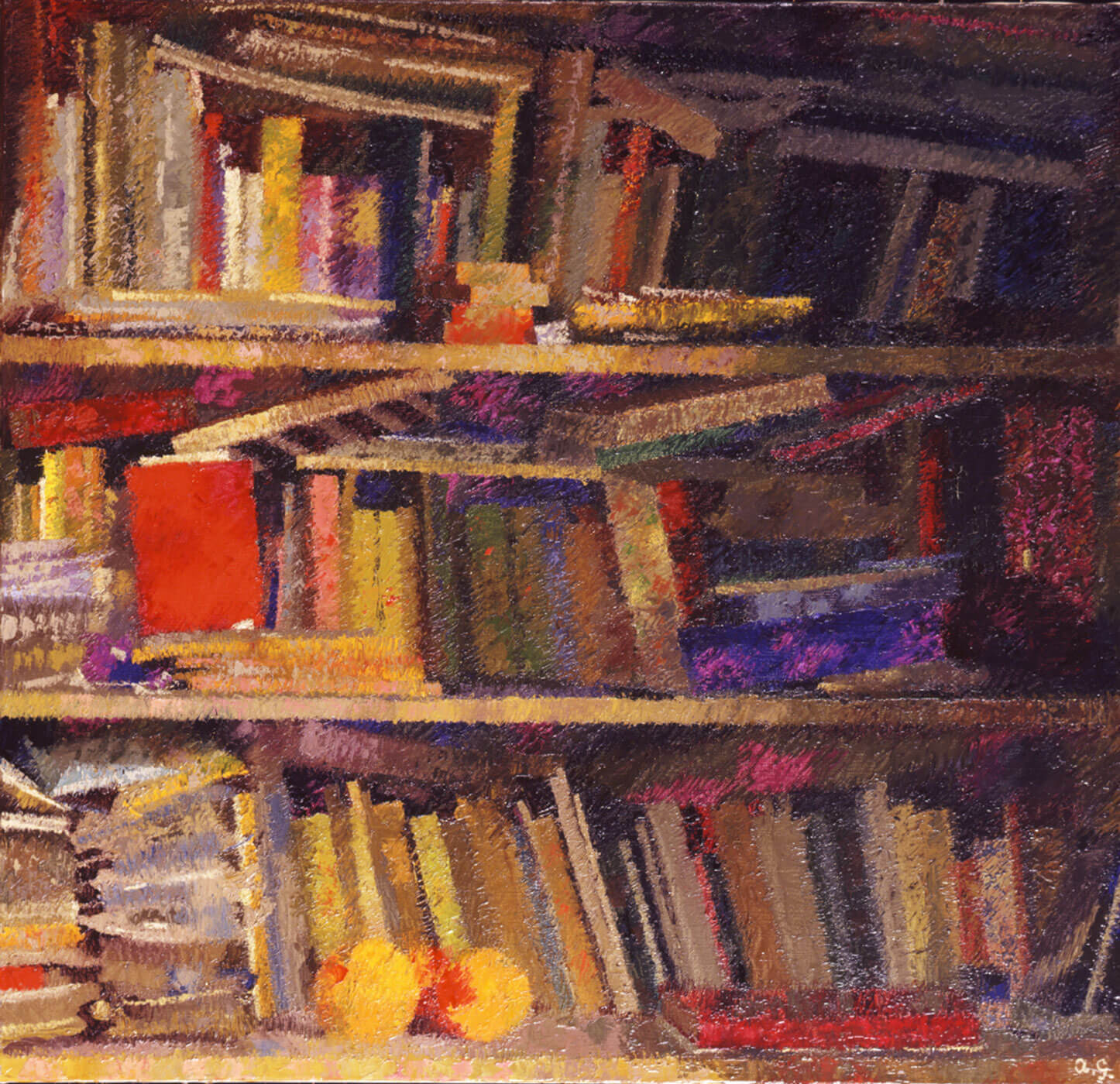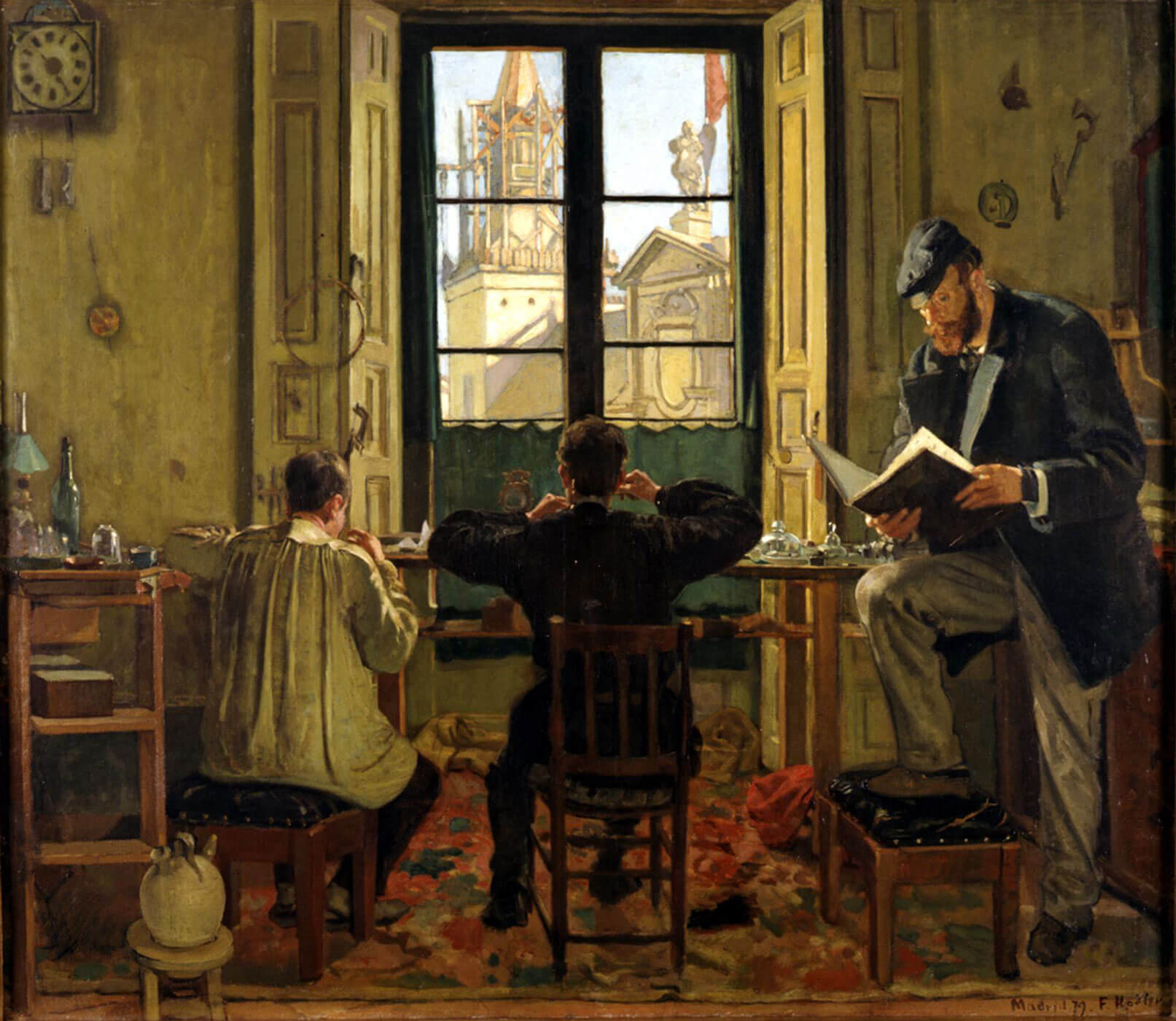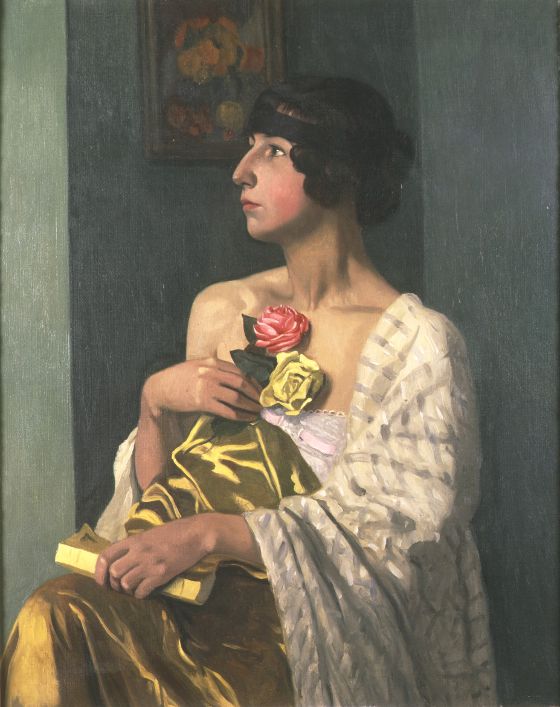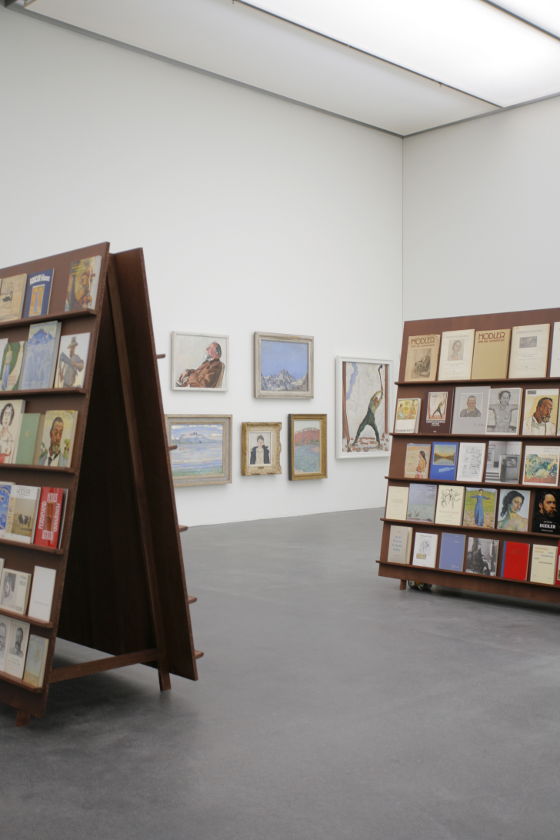The Reading Room
Works from the collection by Hodler, Augusto and Giovanni Giacometti, Amiet, Vallotton and Markowitsch
Literature and visual art are closely connected. Pictures can convey a narrative, and texts can represent things. They are two artistic media which complement one another, but have also traditionally been in competition. If the word was once seen as the most powerful carrier of content, it is now the image that dominates our perception. Language is very important in art; the description and interpretation of works of art is unimaginable without it. Many artists accompany their work with texts on a theoretical level, or themselves work as authors. In the presentation of the collection, The Reading Room, six reading rooms have been set up in which the contemplation of art works is linked with various forms of text and language. Reading, language, writing and image, visual and written culture have been woven into a dense fabric.
The exhibition opens with a homage to a writer who was himself several times the object of artistic examination. Carl Spitteler, born in 1845 in Liestal, settled in Lucerne in 1893, and lived there until his death in 1924. Spitteler was a poet, story-teller and essayist – and the first Swiss writer to win the Nobel Prize for Literature. Ferdinand Hodler (1853–1918) painted Spitteler in 1915, when both men were coming under attack in the propaganda of the two warring neighbours, France and Germany.
In the oeuvre of Rémy Markowitsch (b. 1957) the project Bibliotherapy represents a climax of his engagement with the Book Universe. Markowitsch had hundreds of people read the three books Bouvard et Pécuchet, Robinson Crusoe and Green Heinrich, and captured their reading on film as a collaborative project. The reading of Gottfried Keller’s Green Heinrich, which is shown as a four-channel projection, lasts for a total of 42 hours. The uncut reading sequences are performed by four different groups of people – young people, women, fellow painters and the artist himself and his personal friends.
The letters between Cuno Amiet (1886-1961) and Giovanni Giacometti (1868-1933) is a continuous dialogue that forms an accompanying commentary to the lives and artistic careers of the two painter friends. In the year 2000 their correspondence was published as a book, which stands at the centre of the third reading-room. During their training together, Amiet and Giacometti were interested in similar issues. But they always sought to explain the differences in their styles of painting. A colour-rush of exotic brilliance radiates from the paintings of Augusto Giacometti (1877-1947), a second cousin of Giovanni Giacometti. In his glorious still-lifes of flowers, he stages colours as though they were fireworks.
Félix Vallotton (1865-1925) wrote five plays and three novels.Vallotton’s paintings are juxtaposed with text extracts from his novel 1920 novel Corbehaut. Vallotton’s paintings seem almost to illustrate the sometimes gloomy passages of the novel. Set in a real Hodler library, the dazzling conclusion of the exhibition is the complete works of Ferdinand Hodler in the collection of the Museum of Art Lucerne. Hundreds of books have been published about his works. The most important of them are shown here, and can be flicked through by visitors to the exhibition. Comparison with the originals might prompt them to engage in their own research campaigns.
curated by Christoph Lichtin



